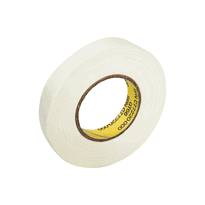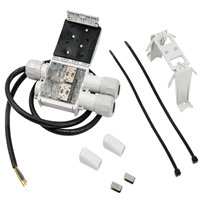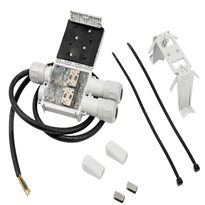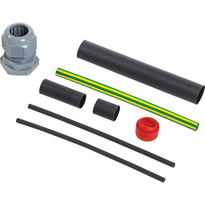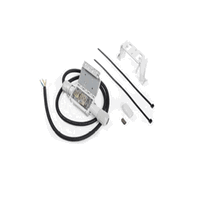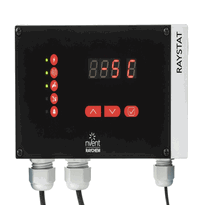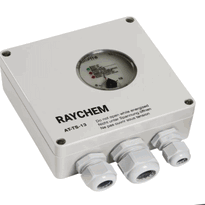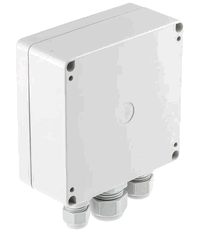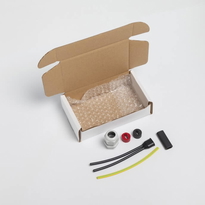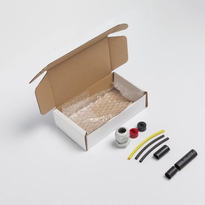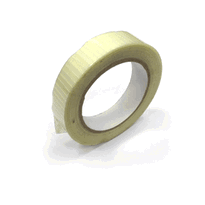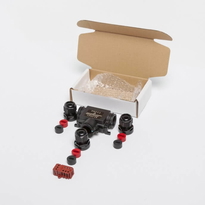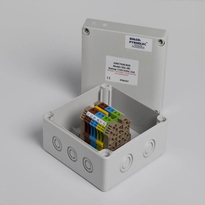Heat Cable Self Regulating
Self-regulating heat cables operate through a core material, typically a conductive polymer embedded with carbon particles, that automatically adjusts its resistance based on temperature changes.
When the ambient temperature drops, the polymer contracts, increasing contact between the particles. This contact raises the resistance of the cable, which in turn enhances the heat output.
Conversely, at higher temperatures, the polymer expands, reducing particle contact. This decreases the resistance and limits the heat generation.
This self-regulating mechanism ensures the cable prevents overheating and maintains efficient performance. It optimizes energy use by adapting to the surrounding conditions, making it a reliable choice for frost protection and in heating applications.
Further details about their design and operation can provide a more comprehensive understanding of their functionality and benefits.
How Self-Regulating Heat Cables Work and Their Material Composition
Self-regulating heat cables operate based on a core material that dynamically adjusts its resistance and heat output in response to temperature changes. This core is composed of a conductive polymer embedded with carbon particles, which form microscopic conductive pathways.
When the ambient temperature drops, the polymer contracts, bringing the carbon particles closer together. This increase in particle contact enhances electrical continuity, thereby raising the heat output.
Conversely, at higher temperatures, the polymer expands, dispersing the particles apart. This separation increases the electrical resistance, reducing heat generation accordingly.
This microscopic process of expansion and contraction occurs automatically, allowing the cable to regulate its temperature without the need for external controls.
The core material is specifically designed for durability and mechanical strength, featuring a thermal cross-linked polymer base. This construction ensures the cable performs reliably under thermal cycling, preventing overheating and maintaining efficient, adaptive heating tailored to ambient conditions. Durability and performance are key benefits of this material composition.
Key Benefits and Efficiency in Various Applications
The capacity of self-regulating heat cables to modify their energy output in response to ambient conditions considerably enhances their suitability for a diverse array of applications. This functionality ensures that the cables emit only the necessary amount of heat, thereby minimizing energy wastage and reducing operational expenses. Self-Regulating Heating Cables are designed with a unique conductive polymer core that adjusts its resistance based on temperature They automatically decrease their heat output when surrounding temperatures rise, which helps to lower electricity consumption and prevent overheating, ultimately promoting safety and extending the lifespan of the cables. These versatile cables are appropriate for use in a variety of environments, including process pipelines, storage tanks, roofs, gutters, and irregularly shaped structures within residential and commercial settings. Their inherent weather-resistant coating allows for reliable outdoor installation even in harsh weather conditions. Their inherent flexibility allows for installation across extensive or complex areas, making them a reliable choice for locations such as industrial sites or food production facilities where safety and efficiency are paramount. The adaptive performance of self-regulating heat cables ensures reliable operation while optimizing energy use in multiple applications. This combination of safety, efficiency, and adaptability makes them an excellent solution for maintaining temperature control in challenging environments.
Installation Practices and Safety Considerations
Proper installation practices and safety considerations are vital to ensure the reliable performance and longevity of heat cables while also minimizing risks such as electrical hazards or structural damage.
Before installation, the area surrounding the cable must be cleared of leaves, debris, and obstructions. The heating cable should be inspected carefully for any damage, and it's important to keep the cable at room temperature during handling and setup to prevent inadvertent damage or degradation.
Positioning the cable correctly is crucial. A minimum distance of 30mm should be maintained from flammable materials to reduce fire risks. Securing the cable firmly in place prevents movement or displacement, which could impair effectiveness or cause damage over time. For roof applications, marking the route with chalk can help ensure accurate and consistent placement.
Electrical safety is paramount. Junction boxes should be installed in sheltered, weatherproof locations to avoid exposure to the elements. Incorporating drip loops on the power connections helps prevent water ingress, reducing the risk of electrical faults. Additionally, selecting appropriate insulation can further enhance safety by minimizing potential electrical hazards and improving overall system performance.
It's also essential to select circuit breakers that match the length and power requirements of the specific heat cable, ensuring protection and compliance with wiring regulations.
Regular testing and proper documentation of cables, connections, and maintenance procedures are important to identify issues early and maintain safe operation. Routine checks contribute to the ongoing safety, efficiency, and reliability of heat cable systems across all applications.
Conclusion
Self-regulating heat cables adjust their output according to the surrounding ambient temperature, making them an energy-efficient and safe choice for various applications. Their specialized material composition enables automatic regulation, which minimizes the risk of overheating and ensures safe operation.
These cables are remarkably straightforward to install, thanks to their intelligent design that adapts to environmental conditions. Proper adherence to recommended installation practices and safety standards is essential to guarantee optimal performance and extend the lifespan of the cables.
By understanding these fundamental aspects, users in the UK can confidently utilize self-regulating heat cables in residential, commercial, and industrial settings. They serve as practical solutions for maintaining consistent temperatures and providing frost protection, all while promoting energy efficiency and safety.








